I am planning to integrate ORM in my project, so i used eclipse's JPA project to generate entity classes out of old databases. In total 168 entity classes where generated and it's fine. But in some constraints like nullable, unique are not automatically generating.
For example I need something like this :-
@Column(name="USER_NAME",unique = true)
private String userName;
but after auto generating entities there is no unique constraint in code. How can I achieve this simply?
any suggestions will be useful.
